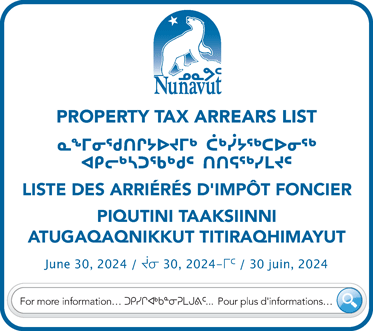Nunavik is 'a key region for us.'
Uranium rush kicks off in northern Quebec
The rush to find uranium – widely called "the new gold"- is on in Nunavik.
Azimut Exploration Inc. will spend $8 million in the region this summer as it scours promising rock formations for uranium, which is increasingly in demand as fuel for nuclear power plants.
The company plans to spend $2.5 million around Kuujjuaq and Kangiqsualujjuaq and another $5.5 million east of Inukjuak.
"The primary objective is uranium, but we also keep our eye out for other minerals," said Azimut president Jean-Marc Lulin.
With 20,000 claims and 17 properties, Azimut is one of the major mineral property holders in Nunavik.
"It's a key region for us. We're giving a lot of importance to our exploration activities there," Lulin said.
Azimut relies heavily on its analyses of existing data to reduce the financial risks involved in prospecting, Lulin said.
Azimut also partners with other mining companies or the Nunavik Mineral Exploration Fund, a Quebec-funded organization that promotes and supports prospecting in the region.
Last summer, in collaboration with the NMEF, Azimut hired a team of Inuit prospectors.
Along with Majescor Resources Inc., Azimut is looking at its West Minto property 150 kilometres east of Inukjuak, for the development of a possible open pit uranium mine there.
Their exploration teams also found "extensive" uranium-bearing minerals at the companies' South Rae property, 130 km southeast of Kuujjuaq.
Along a 35-km stretch of the property, they found at least 96 separate radioactive outcrops, where yellow minerals – a sign of uranium – were observed.
Azimut's North Rae property, lies about 30 km southeast of Kangiqsualujjuaq, near the proposed Kuururjuaq provincial park.
It's uranium deposits, spread over 759 sq. km., are thought to be worth about $500 million if an open pit mine is eventually developed. Recently announced results from drilling, carried out last summer by NWT Uranium Corp., confirm "the potential of North Rae as a world-class uranium discovery."
But Azimut says it won't be able to afford to develop the property if a buffer zone around the park limits access.
Although Azimut supports the creation of the park, Lulin said "there is a place for many activities in a region."
And he maintains uranium mining can be done in a responsible way and has no more impact than any other kind of mine.
However, open-pit uranium mining is known to leave behind waste that is almost as radioactive as the uranium itself and is often associated with an increased cancer rate among humans, in addition to birth defects, high infant mortality and chronic lung, eye, skin and reproductive illnesses.
Some experts contend this material, or tailings, remains hazardous for more than 250,000 years.
Last month, Labrador's Nunatsiavut government placed a three-year moratorium on uranium mining on Inuit-owned land. The ban applies to the working, production, mining and development of uranium, but not to exploration activities.
Lulin said it takes 10 years to turn a deposit in to a mine. So he says that's more than time enough to provide Nunavimmiut information in support of uranium mining.
Lulin spoke about "the dynamic of the mining industry and its relationship to economic development" at Nunavik's first mining workshop, held May 12 to 14.
Representatives from local communities, mining companies and government attended the workshop at the Kaitittavik Town Hall in Kuujjuaq.
Workshop participants discussed how to build bridges between the mining and Inuit communities and what should be included in a Nunavik exploration mining guidelines document.





(0) Comments